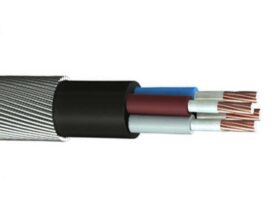Introduction: In today’s interconnected world, reliable and high-speed internet connectivity is essential. When it comes to choosing the right connection, two popular options stand out: fiber optic and Wi-Fi. While both offer internet access, they have distinct characteristics that make them suitable for different situations. In this blog post, we will explore the differences between fiber optic and Wi-Fi connections, helping you make an informed decision based on your specific needs.
- Speed and Bandwidth:
- Fiber Optic: Fiber optic connections provide incredibly fast speeds, capable of reaching gigabit or even multi-gigabit speeds. They offer substantial bandwidth, making them ideal for data-intensive tasks like streaming, gaming, and large file transfers.
- Wi-Fi: Wi-Fi connections are convenient for wireless connectivity within a limited range. While modern Wi-Fi standards, such as Wi-Fi 6 (802.11ax), offer impressive speeds, they may not match the sheer speed and bandwidth capabilities of fiber optic connections.
- Reliability and Stability:
- Fiber Optic: Fiber optic connections are highly reliable and stable. They are less prone to interference, weather conditions, and physical obstructions. Fiber optic cables are immune to electromagnetic interference, ensuring consistent performance.
- Wi-Fi: Wi-Fi connections can be affected by interference from other devices, walls, and distance from the router. Signal strength and stability may vary depending on factors like the number of connected devices and the proximity to the router.
- Coverage and Mobility:
- Fiber Optic: Fiber optic connections require physical cables, limiting their coverage to specific locations. They are typically used in fixed installations, like homes or businesses.
- Wi-Fi: Wi-Fi offers wireless connectivity, allowing mobility within the coverage range of the Wi-Fi router. It is well-suited for devices like laptops, smartphones, and tablets that require flexible connectivity across multiple locations.
Conclusion: Choosing between fiber optic and Wi-Fi depends on your specific requirements and priorities. Fiber optic connections excel in speed, bandwidth, reliability, and stability, making them ideal for data-intensive tasks and fixed installations. Wi-Fi, on the other hand, provides wireless connectivity, offering convenience and mobility within the coverage area of the router.
Consider factors such as your internet usage patterns, the need for high-speed connections, reliability, and the mobility requirements of your devices. By understanding the distinctions between fiber optic and Wi-Fi, you can make an informed decision that ensures a seamless internet experience tailored to your needs.










Leave a Reply